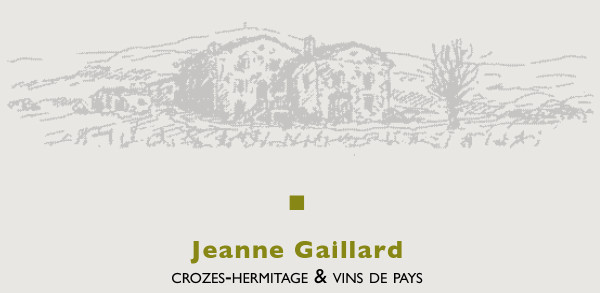
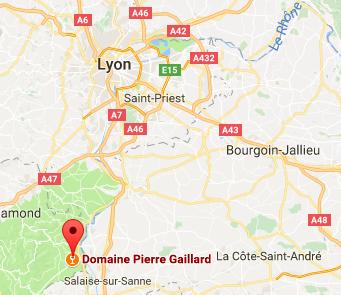
Overview: Jeanne Gaillard, daughter of winemaker Pierre Gaillard, was forcibly introduced to the world of wine when she was a child. Jeanne had gotten caught for some mischevious act, and as punishment, was made to go work in the family vineyard. Her experience that day triggered a lifelong passion for wine!
Years later, she would end up studying sales and viticulture in Beaune, and would have internships at wineries in France and abroad. She was first employed by an estate in Burgundy followed by a winery in California.
In 2008, when she was 24 years old, she acquired 5 hectares in IGP Crozes-Hermitage and 8 hectares in IGP Collines Rhodaniennes, and has been managing them ever since.
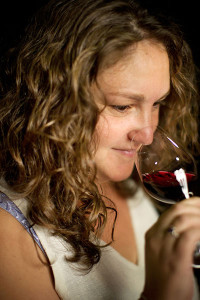 Location: Jeanne Gaillard Vineyard is spread out between 3 administrative zones–Rhone, Loire, Drome–and 3 districts–Marsaz, Malleval and Ternay
Location: Jeanne Gaillard Vineyard is spread out between 3 administrative zones–Rhone, Loire, Drome–and 3 districts–Marsaz, Malleval and Ternay
Surface Area: 13 hectares
Soils: Smooth pebbles, clay, fine sand composed of detrital granite
Grape Varietals:
-Red : Syrah, Merlot
-White: Viognier, Roussanne, Marsanne, Chardonnay, Muscat
Annual Yield: 60,000 bottles
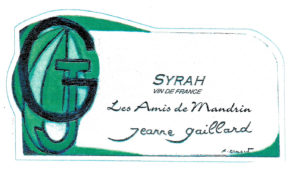
Syrah Les Amis De Mandrin
Overview: This wine comes from several plots of vines with different characteristics between the Drome, the Ardèche, and the Loire. These 3 terroirs are composed of rolled pebbles and granite sands.
Grape Variety: 100% Syrah
Viticulture: The vines are mainly worked manually, but when necessary, machines are used.
Harvest: The grapes are harvested part mechanically and part manually, especially for those vines that are less accessible. A successive sorting on the vine is carried out if necessary.
Vinification: Once the grapes reach the cellar, the bunches are completely destemmed and then vinification begins with a pre-fermentation cold maceration. Fermentation is conducted at a temperature of about 25°C, followed by a post-fermentation maceration at around 30°C.
Aging: 12 months in wooden vats.
Cellaring: 3-5 months
Tasting Notes: Aromas of juicy, ripe dark fruits such as blackberries and black cherries in the bouquet and on the palate, supplemented by notes of smoke and spice.
Food Pairings: Charcuterie, red meats.
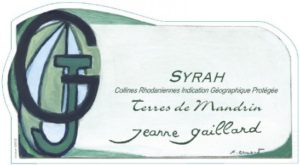
Syrah Terres de Mandrin I.G.P. Collines Rhodaniennes
Terroir: This IGP Syrah comes from several plots with different characteristics. In the Drôme, the scree (slope covered with small loose stones) of Vercors was eroded by the Isère and Drôme rivers, creating a soil of rolled pebbles mixed with sand. On the high plateaus of Ardèche and the Loire, eroded granite produces soft sands with good drainage. The climate is temperate with regular, light rain.
Communes: Marsaz, Colombier-le-Vieux, Charnas, Malleval
Production Area: 10 hectares
Soil: Rolled pebbles and granite sands
Grape Variety: 100% Syrah
Average Age of the Vines: 20+ years old
Training Method: Cord on wire
Average Yield: 55 hl/ha
Harvest: Mechanically and manually done at full maturity of the grapes. Sorting on the vine if necessary.
Vinification: Total destemming. Cold pre-fermentation maceration, and post-fermentation at 30°C. Fermentation at 25°C.
Maturation: 12 months is wooden barrels
Tasting Notes: Named for the French Robin Hood known as Louis Mandrin, and grown nearby the northern Rhone Valley appellations, this IGP expresses the fruitiness of young wines, all the while preserving the typical character of wines from this region. This wine benefits from a bit less extraction than the appellation wines nearby, but it still expresses the fresh qualities and fleshy fruitiness associated with the Syrah grape variety. Superb, with precision and elegance, a gourmet concentration highlights this Syrah’s spicy and smoky notes. Pleasurable on the palate with an acidic finish, full of freshness and red fruit.
Food Pairings: Pairs especially well with steak tartare.
Cellaring: To be consumed within 5 years of vintage
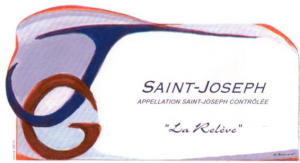
Saint-Joseph La Relève
Surface Area: 1 hectare
Districts: Chavanay and Malleval (Loire)
Grape Varietal: 100% Syrah
Soils: Granite
Yield: 40 hl/ha
Average Age of Vines: 30 years old; the grapes come from three different parcels of vines. Traditionally grown, these vines have been meticulously cared for and are now in very good condition.
Vinification: Hand picked harvest. Cold maceration prior to fermentation for 4 to 5 days. Alcoholic fermentation at 30°C. Maceration after fermentation at 35°C. Malolactic fermentation in barrels. Designed for aging, this wine was highly extracted, thereby revealing the terroir’s rich qualities and mineral characteristics.
Maturation: Aging takes place in a combination of new oak barrels and barrels used once or twice before. Gentle maturing with elegant oak, thereby respecting the wine’s true character.
2017 Reviews: “Youthful purple. Ripe dark berry, violet and olive aromas are complemented by a smoky mineral nuance and a musky pipe tobacco note. Sweet and seamless in texture, offering lush blackberry and cherry liqueur flavors and a building floral nuance. In a distinctly ample style, which is in keeping with the vintage. Round, even tannins form steadily on a long, smoke-tinged finish that strongly repeats the dark fruit note.” – 91pts, Vinous
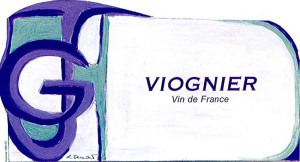
Viognier
Surface Area: 0.4 hectares
Districts: Slopes facing south-west in Ternay (Rhône) and the plains of Marsaz (Drôme)
Grape Varietals: 100% Viognier
Soils: Fine sand of detrital granite; the acid soil is made up of big round pebbles that absorb heat, thereby contributing to the good maturity of the grapes
Vinification: Partly handpicked and partly machine harvested. Sorting of the healthy and the well-ripened grapes. Alcoholic fermantation in barrels with temperature control between 15 and 18°C. Malolactic fermentation in barrels. The grapes are vinified using the same techniques as appellation wines: the must ferments in barrels at a low temperature (between 16°C minimum and 18 °C maximum). Any risk of oxidation is avoided to allow the Viognier grapes to fully express themselves.
Maturation: 7 to 8 months in fine oak from Allier and Nevers. 10% new oak. Lee stirring once a week. The lees are conserved during maturing and frequently stirred. This technique develops the natural fleshy and unctuous characteristics of Viognier associated with this terroir.
Tasting Notes: Unctuous, aromatic, and fresh; vivid minerality with a rich aromatic palate of white flowers, peach, and apricot.


